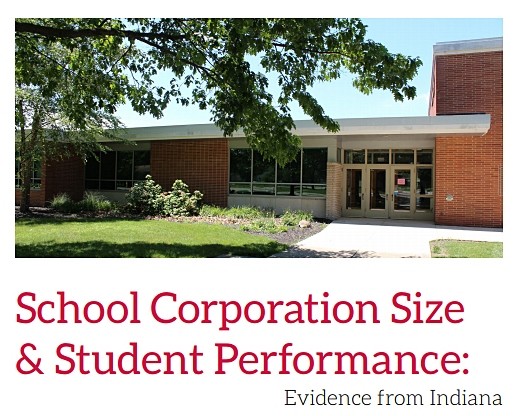
We are pleased that several of our top priorities are alive and in good shape at the midpoint – including long-term transportation funding, pre-K expansion and anti-smoking legislation. All of these tie directly to the Indiana Vision 2025 economic development plan.
Long-term transportation funding – tolling around the corner?
This is the Chamber’s top priority in 2017. House Bill 1002 is the proposal to take care of the state’s transportation needs; the 20-year infrastructure plan addresses the erosion in funding that has taken place and the lost purchasing power from the enhancements in automotive technology and fuel efficiency.
We believe that the bill’s proposed gas tax increase is pretty solid. Senator Luke Kenley (R-Noblesville), who appears to be taking the lead on this bill in the Senate, may change things like dedicating all of the sales tax on gasoline to transportation needs and put a heavier emphasis on tolling, which would enable the state to undertake major projects like adding additional lane miles to Interstate 70 and Interstate 65 throughout Indiana. Overall, we are very encouraged by the commitment we have seen to date from the House, Senate and Governor. We also realize this will be a little tougher sell in the Senate and are prepared for a strong advocacy effort.
Tax threats avoided; overall outlook good
Everyone should be thrilled that two detrimental proposals – on mandatory combined reporting and sales tax on services – didn’t really get out of the gate. And that’s thanks to the good work of the Chamber’s Bill Waltz over the course of the summer. That means there are no big, threatening tax bills looming for us to worry about.
Instead, this session has brought some positive activity that will improve things procedurally within the Department of Revenue. Additionally, while not involving the Legislature, the Chamber has provided substantial input to the Department of Local Government Finance on a rule with respect to the so-called big box commercial/industrial property assessments. (That input was made possible thanks to a subgroup of the Chamber’s Tax Committee that analyzed the big box assessment issue; we are always grateful to our members for lending their expertise!)
On track: expansion of the state’s pre-K pilot for children from low-income families
Obviously, the expansion – to $16 million total in the Senate (including funds for a new online pre-K pilot); at $20 million in the House proposal – is not as significant as we would like, but we recognize this is still a very young program and are encouraged that what’s being debated is the level of increased funds, not the merit. We also appreciate all of the programmatic language that allows for potential expansion into all 92 counties (SB 276) and increases the income thresholds for eligible families (HB 1004). That said, we are going to continue to work to get as many dollars as possible directed to this. It’s vital for children to have that strong early education as a foundation.
Making the superintendent of public instruction an appointed position still can happen
We remain optimistic this longstanding Chamber goal will be realized this session. Yes, House Bill 1005 will have to be amended because it’s too similar to the one the Senate voted down last week. What happened there was, by all accounts, a blunder created by a perfect storm of factors – including little caucus discussion before the vote. But the good news is that the House bill is alive AND Senate leader David Long (R-Fort Wayne) has assigned it to the Senate Rules Committee that he chairs, so he’s going to go to work on it and will ultimately determine how much of it needs to be changed. We speculate that requiring Indiana residency – which is not currently in HB 1005 – could be one modification. It definitely will have to be different than the failed bill to pass the Senate Rules Committee.
Comprehensive smoking reform, now in HB 1001 and HB 1578, would send big message
We are hopeful that the increased tax on cigarettes ($1 per pack) and funding for a more robust smoking cessation program will stay in the budget bill (HB 1001). Likewise, that the repeal of the special civil rights privileges for smokers will survive on its own in HB 1578; this marks the first time that policy has been passed by either house, so we are making progress. Seeing these three elements cross the finish line would be a clear indication that the state is taking seriously the ever-increasing costs to employers of Hoosiers smoking – more than $6 billion annually in health care costs and lost productivity on the job.
The provision raising the cigarette buying age from 18 to 21 is most likely not happening this session after its removal in the House Ways and Means Committee. That group felt there wasn’t enough definitive information or testimony.
ISTEP, energy and technology updates
The Chamber is supporting legislation that will replace ISTEP with a shorter, more focused assessment. You can put all the debates and disagreements aside because this has to happen this session.
We are encouraged by the Senate’s passing of SB 309, an energy bill, which, among other things, addresses net metering for those investing in wind and solar energy; we believe the bill is consumer-friendly. Moreover, utilities have offered up some ideas and concessions that we think will help control electricity prices. The water infrastructure proposal (SB 416), while not funded, sets up the appropriate framework and keeps that needed policy moving along.
The budget bill (HB 1001) contains some pro-technology priorities, including the transferability and expansion of the venture capital tax credit. This would incentivize additional out-of-state investors without state tax liability to invest in promising early stage Indiana companies. Additionally, the open data measure (HB 1470) would allow public access, in an appropriate way, to the tremendous amount of data the state has collected. This is one of a couple of new initiatives coming from our Indiana Technology & Innovation Council policy committee. To see these efforts making progress right away, in their first session, is very encouraging.
A disappointment for the Indiana Chamber
There were several bills centered on litigation that couldn’t get out of committee. That’s because there are too many attorneys on both civil justice committees who are standing with trial lawyers, which essentially is blocking any sort of tort reform.
 ISTEP will soon change into ILEARN, per House Enrolled Act 1003 which was signed into law this spring. However, an important part of the legislation is often overlooked. There will soon be changes to graduation requirements; instead of having end-of-course assessments be counted as the graduation exam, graduation pathways will be determined by the State Board of Education (SBOE). These options could include:
ISTEP will soon change into ILEARN, per House Enrolled Act 1003 which was signed into law this spring. However, an important part of the legislation is often overlooked. There will soon be changes to graduation requirements; instead of having end-of-course assessments be counted as the graduation exam, graduation pathways will be determined by the State Board of Education (SBOE). These options could include:
 School corporation size has a direct impact on student achievement. And more than half of Indiana school corporations are too small to produce the most effective outcomes, according to research commissioned by the Indiana Chamber of Commerce Foundation and conducted by the Ball State University Center for Business and Economic Research (CBER).
School corporation size has a direct impact on student achievement. And more than half of Indiana school corporations are too small to produce the most effective outcomes, according to research commissioned by the Indiana Chamber of Commerce Foundation and conducted by the Ball State University Center for Business and Economic Research (CBER).
 The ISTEP Alternatives Panel has made its final recommendations on how to replace ISTEP, which was legislatively determined to sunset in the fall of 2017 after scoring, technical and mismanagement issues plagued the exam the past two years.
The ISTEP Alternatives Panel has made its final recommendations on how to replace ISTEP, which was legislatively determined to sunset in the fall of 2017 after scoring, technical and mismanagement issues plagued the exam the past two years. ISTEP has been in the news a lot as of late – and for some very unfortunate reasons. Three bills were passed this legislative session dealing with ISTEP from last year and moving forward. The Indiana Chamber strongly supports accountability when it comes to our teachers, our schools and our students – and we feel that all have handled the current ISTEP testing crisis honorably. However, last year’s administration of ISTEP was a complete nightmare – from the length of the test, to the delays in scores, to the discrepancy between the paper and online tests, to the potential scoring errors that were never corrected. Not to mention the anticipated drop in scores due to testing for new, more stringent college and career ready standards.
ISTEP has been in the news a lot as of late – and for some very unfortunate reasons. Three bills were passed this legislative session dealing with ISTEP from last year and moving forward. The Indiana Chamber strongly supports accountability when it comes to our teachers, our schools and our students – and we feel that all have handled the current ISTEP testing crisis honorably. However, last year’s administration of ISTEP was a complete nightmare – from the length of the test, to the delays in scores, to the discrepancy between the paper and online tests, to the potential scoring errors that were never corrected. Not to mention the anticipated drop in scores due to testing for new, more stringent college and career ready standards.
 The 2016 session of the Indiana General Assembly may be short in time but, as usual, there is a long list of important issues. In outlining his priorities in the State of the State speech, however, Gov. Mike Pence fell short in four key areas.
The 2016 session of the Indiana General Assembly may be short in time but, as usual, there is a long list of important issues. In outlining his priorities in the State of the State speech, however, Gov. Mike Pence fell short in four key areas. In testimony this week, the Indiana Chamber of Commerce began outlining its priorities for school testing reform. Caryl Auslander, the Indiana Chamber’s vice president of education and workforce development policy, expands on some of her remarks:
In testimony this week, the Indiana Chamber of Commerce began outlining its priorities for school testing reform. Caryl Auslander, the Indiana Chamber’s vice president of education and workforce development policy, expands on some of her remarks: